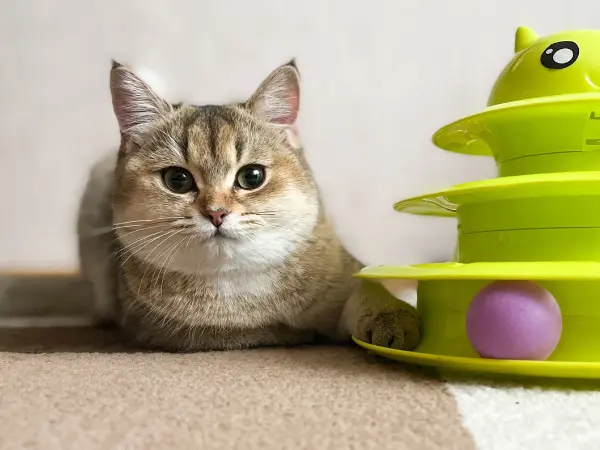Witnessing a cat limping can be distressing for any pet parent — whether it's a subtle hobble or a noticeable limp. In any case, it's essential to understand the potential causes and how to provide immediate care for a cat's broken or sprained leg.
In this blog, we'll explore the common reasons why cats limp, including issues like broken paws, fractures, or sprains. Additionally, we'll offer vet-approved first-aid tips to help you support your feline friend during pet emergencies.
What’s in This Guide
- A Note on Cat Behavioral Changes When in Pain
- Why is My Cat Limping? [The Most Common Reasons Why]
- First Aid Tips for a Suspected Cat Broken Leg or Sprain
- Will a Cat’s Limp Heal on Its Own?
- How Do I Know if My Cat’s Limp is Serious?

A Note on Cat Behavioral Changes When in Pain
In virtually all instances of limping in cats, the cat is experiencing pain. However, cats are also known for hiding their pain, whatever the cause may be. This is why cat parents need to pay attention to the subtle hints that a cat may be experiencing pain. The main behavioral cues to watch out for include:
- Sudden reclusive behavior
- Hiding or avoiding people
- Becoming more aggressive
- Rapid or shallow breathing
- Decreased activity and/or appetite
→ Learn more in our complete guide - Cat Pain: 10 Need-to-Know Signs [Vet-Approved]
Why is My Cat Limping? [The Most Common Reasons Why]
1. Cat Broken Leg or Fracture
Fractures in cats is a common cause of limping. Cat broken leg or fractures can be caused by physical trauma, falling from heights, and fights with other animals. In some cases of limping in cats, the leg itself may be broken or it could also be the pelvis, depending on what happened to the cat.
Along with limping, symptoms of a broken leg or fracture in cats include:
- Swelling;
- Bruising;
- Deformity in the affected paw;
- Dragging the limb as they walk; and
- Pain-related behavioral changes in cats.
2. Cat Sprained Leg & Strains [Soft Tissue Injuries]
Cats may also limp due to injuries that impact their ligaments, tendons, and muscles. The overarching term for these injuries is “soft tissue injury.” When the soft tissue injury involves the stretching or tearing of ligaments, these are referred to as “sprains” — if involving muscles or tendons, “strains”.
As far as symptoms of cat sprained or strained legs go, they are fairly similar. Aside from limping, the cat may also experience the following:
- Swelling,
- Bruising;
- A decreased range of motion; and
- Pain-related behavioral changes in cats.
3. Arthritis in Cats
Arthritis, particularly in older cats, can cause limping. Arthritis in cats happens to cats as a result of wear and tear on their joints over the years — however, arthritis can have an earlier onset following an injury. Oftentimes, detecting arthritis in cats is challenging because cats instinctively hide their pain as much as they can.
Aside from limping, cats with arthritis may also exhibit the following:
- A decreased range of motion;
- Difficulty jumping or climbing;
- Decreased physical activity;
- Poor self-grooming due to decreased flexibility; and
- Pain-related behavioral changes in cats.
4. Infected, Torn, or Ingrown Nail
Cats can sustain a variety of damage to their nails, such as:
- Cat nail infections typically follow injury and/or exposure to an unsanitary area.
- Torn cat nails typically result from accidents or if a long nail gets snagged.
- Lastly, ingrown cat nails typically occur due to improper nail trimming; however, genetic factors may also make a cat more susceptible to ingrown nails.
If a nail is infected, torn, or ingrown, it can cause significant pain for a cat and make walking difficult. This results in limping. Damage to a cat’s nails can also lead to the following:
- Licking or chewing on the affected nail
- Swelling or redness;
- Blood or pus around the affected nail; and
- Pain-related behavioral changes in cats.
5. Burnt or Injured Paw
Another common cause of limping in cats is a burnt or injured paw. This kind of injury causes a cat to limp — as they try to avoid putting pressure on the injured area. Burnt paws usually happen after the cat accidentally walks on a hot surface, such as hot concrete, a stove, and so on. Meanwhile, paw injuries can be due to stepping on sharp objects or harmful chemicals.
Aside from limping, a burnt or injured paw pad in cats can also produce the following symptoms:
- Visible cuts, blisters, or even charred skin on the paw pads;
- Licking or chewing on the affected paw; and
- Pain-related behavioral changes in cats.

First Aid Tips for Cat Broken Leg, Sprained Leg, or Broken Paw
Now that we have covered the most common causes of cat limping, here are some general first aid tips to keep in mind, if you are faced with this situation:
1. Handle with Care & Caution
Approach your cat gently and avoid putting pressure on the affected limb. If they resist or show signs of pain, refrain from forcing them to move and seek veterinary assistance.
- If the cat has sustained any cuts, it may be advisable to flush the wound with a saline solution or water. This is best done with an oral syringe. Make sure to flush the wound enough to remove debris and contaminants.
- In cases where the limb seems deformed or bent, AVOID straightening out the injured limb yourself and call an emergency vet promptly.
2. Call an Urgent Care or Emergency Vet
Depending on the cat’s injuries or suspected issues, you would either need to contact an urgent care veterinarian or an emergency vet.
- For paw injuries, nail damage, and suspected arthritis — reach out to a pet urgent care vet
- For cat broken leg or sprained leg — reach out to an emergency vet or urgent care veterinarian
- For any injury with profuse bleeding — reach out to an emergency vet
3. Prepare Your Cat for Transport
The safest way to transport a cat with a broken leg, sprained leg, or other similar injuries that cause limping is by using a cat carrier. Make sure to remove the top of the carrier to avoid pushing an injured cat through the small carrier door. For added comfort, place a towel on the surface of the carrier.
Will a Cat’s Limp Heal on Its Own?
For any of the injuries and issues covered in this article (cat broken leg, cat sprained leg, arthritis, nail damage, and paw damage), we advise pet parents to contact a veterinarian.
While cats are known for their physical resilience, leaving a potentially serious injury untreated can lead to complications. Consulting with a veterinarian ensures proper assessment and treatment that facilitates healing and prevents further issues.
How Do I Know if My Cat’s Limp is Serious?
In a majority of cases, limping in cats is serious and needs to be brought to a vet’s attention.
A veterinarian can perform a thorough examination, including any needed diagnostic tests, to identify the root cause of the cat’s limp. From there, vets recommend the best course of action.
Urgent & Emergency Vet Services: Sploot Veterinary Care
Sploot Veterinary Care stands ready to provide crucial support during pet emergencies and urgent care cases. We are a primary & urgent veterinary care provider with vet clinics in Chicago, Denver and Colorado Springs that operate on extended hours.
With our dedicated team of professionals, same-day urgent appointment availability (365 days a year), and urgent drop-off emergency care, we prioritize your pet's well-being in urgent cases.
Whether you’re looking for emergency vet services or same-day urgent pet care, we are here to help. Call our team to learn more about availing urgent or emergency vet care!
As always, we’re with you every pounce of the way!






